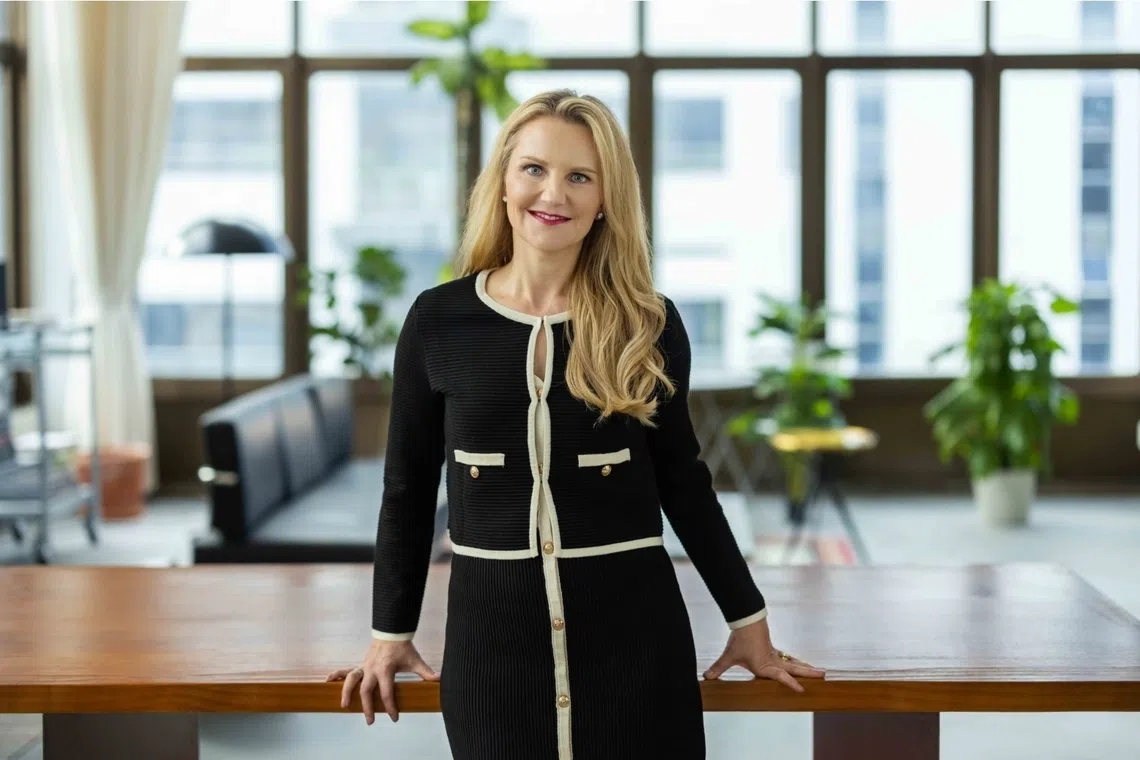Can B2B payments in APAC finally match the speed of consumer transactions?
Payments network Mastercard seeks to modernise commercial payments with embedded finance solutions and partnerships
Manual processes. Lack of transparency. Different regulations and data requirements across borders.
These pain points continue to plague business-to-business (B2B) transactions worldwide even as consumers tap and pay with ease, noted Anouska Ladds, Mastercard executive vice-president, Commercial and New Payment Flows, Asia-Pacific.
“The consumer side taught us that payments should be simple, fast, and trusted,” said Ladds. But “many businesses are still stuck with paper invoices, manual reconciliation, and platforms that don’t connect”.
Reconciliation means verifying that payments recorded in company books match bank statements and invoices.
Removing such hurdles could unlock a multi-trillion-dollar opportunity for businesses and payment providers. Mastercard estimates that US$77 trillion (S$100 trillion) out of the US$80 trillion in addressable global B2B transactions still rely on traditional payment methods, including bank transfers.
Asia-Pacific stands out as a bright spot. The region has led in digital transformation, observed Ladds. The challenge: It remains fragmented, with each market having its own payment systems, regulations and supplier networks.
“That complexity translates into real operational challenges,” Ladds said, including delayed visibility on cash positions, inefficiency in reconciliation, and risks to supply chain resilience.
Addressing these issues, she said, will help APAC businesses “unlock working capital, reduce exposure to fraud and compliance risk, and power growth across the region”.
Persistent problems
Small and medium-sized enterprises (SMEs) in APAC face persistent hurdles: Manual processes, limited access to financing and a lack of tailored payment solutions, said Anouska Ladds, Mastercard executive vice-president, Commercial and New Payment Flows, Asia-Pacific.
Mastercard’s research, conducted in April 2025, found that about two-thirds of SMEs in Singapore use multiple banking providers to keep expenses separate and to secure better rates or financial products that fit their needs.
“When solutions aren’t designed for their realities, SMEs end up piecing together services from multiple providers,” she said. This further complicates and makes it harder for them to secure financing, manage cash flow, and benefit from digital innovations.
Large corporates, meanwhile, grapple with scale and, with it, complexity. Managing thousands of suppliers across borders demands automation, optimisation of working capital, and interoperability of payments with enterprise resource planning (ERP) and procurement systems, Ladds said.
Holistic solutions
Mastercard seeks to meet business needs with modular solutions that can be integrated into workflows. One example is its embedded virtual card technology, which lets companies issue secure digital payment instruments instantly, eliminating paperwork and strengthening controls over spending.
The automated process also means faster payments for suppliers, “which can lead to early payment discounts and stronger supplier relationships, further improving cash flow”, added Ladds.
Complementing this is Mastercard Move, its portfolio of money transfer solutions. It allows businesses to gain real-time control and cash flow visibility across borders, with instant payments to over 200 countries and more than 150 currencies.
Beyond payment solutions, Mastercard also supports small and medium-sized enterprises with a loyalty programme that provides access to over 300 tailored offers in 178 markets and 37 languages.

Partnerships to scale
The US-based payments network has been expanding its partnerships to speed up adoption of its solutions.
In August, Mastercard partnered Infosys Finacle to provide financial institutions globally with cross-border payment capabilities through Mastercard Move. Infosys Finacle is part of EdgeVerve Systems, a wholly-owned subsidiary of India’s second-largest IT firm Infosys.
This integration significantly reduces the implementation time and resources needed to “move money faster, more securely, and with greater transparency”, said Ladds.
Most recently in September, Mastercard announced the Australian launch of its virtual card technology embedded in US-based technology company Oracle’s cloud enterprise resource planning (ERP) platform, with Westpac, one of Australia’s “Big Four” banks, being the first local commercial issuer.
This enables Oracle’s customers to automate supplier payments, streamline reconciliation and gain real-time visibility into cash flow within the existing ERP platform.
Such collaborations, Ladds said, are critical. “No single player can solve the complexity and fragmentation of APAC alone.”
Tackling fraud
It is the same approach the company takes to address fraud and cybersecurity risks.
“Cybercriminals today operate as coordinated networks across borders, sharing stolen data and tactics in real time,” Ladds said. “Siloed, point-in-time defences just don’t cut it anymore.”
In APAC, companies incur an average cost of S$3.95 for every dollar lost to fraud, according to a 2024 study by US-based data and analytics company LexisNexis Risk Solutions. This includes manpower and recovery costs.
Mastercard is using artificial intelligence (AI) to link data points like identity signals, behaviours and transaction patterns to detect fake identities, money mule accounts, and suspicious activity before fraud occurs, she said.
In the Philippines, Mastercard’s anti-money laundering solution Trace detects over 100 potential money mule accounts monthly across real-time payment systems. The Philippines partnership, launched in February 2025 with InstaPay operator BancNet, was the first Trace roll-out in APAC.
“We work with regulators, industry consortiums, and cross-sector coalitions to share intelligence and stay ahead of emerging threats,” said Ladds.
The goal, she added, is simple: Security that’s invisible yet omnipresent, protecting every interaction. “When the ecosystem is secure, everyone benefits.”
This was produced in partnership with the Monetary Authority of Singapore and the Global Finance & Technology Network
For more stories, go to https://bt.sg/sff2025
Decoding Asia newsletter: your guide to navigating Asia in a new global order. Sign up here to get Decoding Asia newsletter. Delivered to your inbox. Free.
Share with us your feedback on BT's products and services
